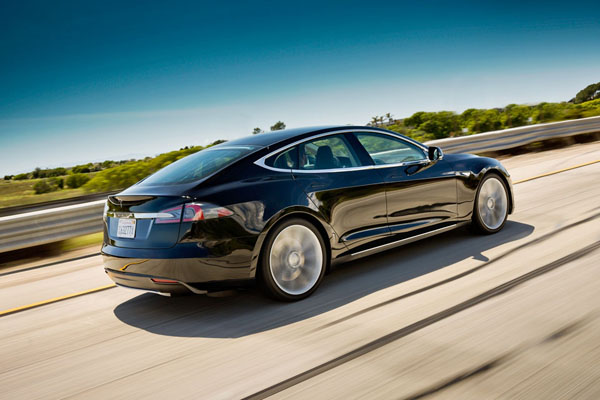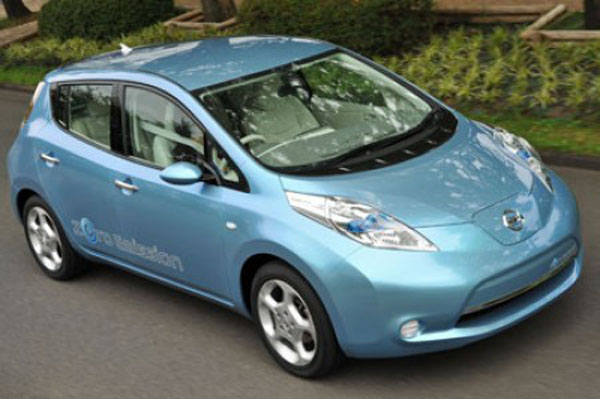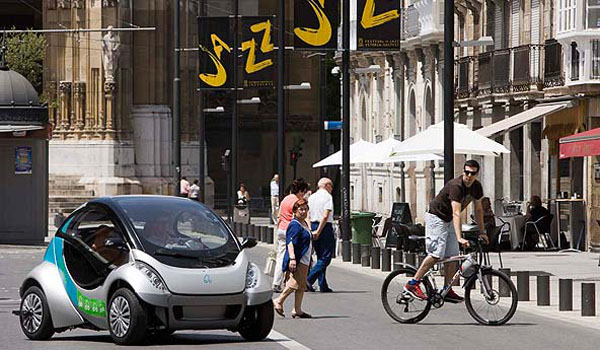With rave reviews for its new sedan and visitors to its small collection of flagship stores numbering in the millions, Tesla Motors is riding high. The California-based automaker released its hotly anticipated Model S luxury electric vehicle (EV) to a fanfare of publicity last month.
Although Tesla has not yet given figures for the Model S’s first month of sales, the company anticipates selling 20,000 of them in 2013. Were this to happen, as well as being a massive shot in the arm for the U.S. EV industry, it would also raise some major questions about the future of EV technology.

Up to now the conventional wisdom has been that mass market appeal for an EV will only come in a small car.
To this point the top-selling all-electric vehicle in the U.S. car market has been the Nissan Leaf. In designing the Leaf, Nissan banked on the idea that take up for an electric car is going to be the greatest among people searching for a small runaround, practical for getting to the office and picking the kids up from school, but not designed for long journeys. This type of consumer isn’t troubled by range anxiety (still, arguably, the biggest barrier to EV’s large-scale commercial success) and is presumably evolved enough not to get an inferiority complex from the size of his vehicle.
However, Nissan has sold only around 13,000 Leafs in the U.S since the car came on the market in December 2010 and sales for the first half of this year are down to a disappointing 3,148.
At the same time medium-sized hybrids like the Chevy Volt have performed better. The Volt, which also came out in December 2010, has achieved sales of 16,500 over the same period. Meanwhile, the Toyota Prius Plug-in Hybrid — another medium-sized sedan — has clocked 2,552 sales from late February (when it first came out ) to May.
Of course the success of the Prius Plug-in and the Volt is not just down to their size. The hybrid technology means that buyers needn’t worry about the car running out of charge; a major turn-off for a lot of consumers.

But the same can’t be said about the Model S and so far (though we’ve yet to receive the concrete figures to confirm it) demand for Tesla’s all-electric has been very high.
Could it be that conventional wisdom is wrong? Could the future for EVs be big, rather than small?
There are certainly some major advantages to building big.
A bigger chassis means more engine space and more room for batteries. As a result the Model S can manage 0-60 in 5.6 seconds, with the highest rated battery option on the car coming in at 85 kWh, which translates to a 300-mile range. Compare this to the Leaf’s range, which has been rated at just 73 miles by the EPA.
But then it’s hard to draw too many conclusions from the case of Tesla, which remains a niche business in spite of the hype surrounding its products. While the Model S has arrived with a fanfare of publicity, it’s unlikely to attract massive sales. This is nothing to do with the car itself, which has so far been universally admired, but instead to do with cost.
The Model S starts at $49,900 after a $7,500 federal tax credit has been taken off. But this cheaper version will not be available till winter, with the first 1,000 Model S’s designated “limited edition” and selling for upwards of $95,000 before the tax credit.
These are price tags that exclude most low- to medium-income buyers from the equation and probably make it unlikely that the car has broad appeal. In fact Tesla CEO, and billionaire Internet tycoon, Elon Musk reportedly only intended for the Model S to be an intermediate step between the car’s high performance Roadster and a third, as-yet-unknown model designed with a mass market in mind. Until the third generation appears (planned for rollout in 2015 according to the company), we can only speculate on the dimensions of the new model.
In the meantime, the auto industry shows no sign of abandoning the small-sized EV concept. In fact, in one particular growth area the EVs have been getting more and more tiny. A number of leading car makers – including GM and Daimler – have developed miniature EVs for use in cities as part of car-sharing systems.

Among these designs is the Hiriko, developed by scientists at MIT, and planned for use in northern Spain. The Hiriko, which means “urban” in Basque, measures just 100 inches long and can collapse to a mere 60 inches for parking. The car could be collected from stations positioned across a city, working in the same way as current bike sharing networks. A limited production run of 20 prototypes will begin next year.
GM’s contribution to the car sharing concept is the egg-shaped En-V, which drives on two wheels and uses the same balancing technology as the Segway to remain upright. The En-V will be tested in China’s Tianjin Eco-City, which is currently under construction.
In reality, comparing these miniature concept EVs with Tesla’s Model S, or the Model S with the Nissan Leaf can be misleading since they were each designed to service different markets. However, automakers are looking carefully at the performances of these various sizes and types to see if they can anticipate the design concept which will make the expected breakthrough to a mass audience and put EV sales on a par with gas-fuelled cars.
In the end vehicle size may be less important for this success than other factors. According to Pike Research’s annual Electric Vehicle Consumer Survey, the optimal price for EVs to attract buyers is around $23,000. However, right now high production costs mean that there are no EVs available for less than $30,000, except for the Mitsubishi i, which hovers right around that price starting before tax credits are applied.
Beyond that there’s the more fundamental problem of infrastructure but there’s a long way to go on this issue and, in spite of a few notable exceptions, charging stations remain few and far between in most areas.